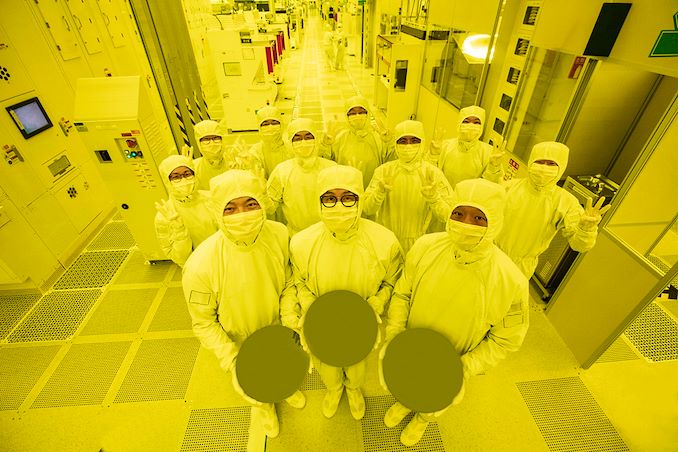Currently, only two foundries offer their customers 3 nm and 4 nm-class process technologies: TSMC and Samsung Foundry. But business media sometimes blames Samsung Foundry for mediocre yields on leading-edge nodes, which cannot be verified. But a recent report issued by an investment banking firm claims that yields of Samsung's 3 nm and 4 nm-class nodes are on quite decent levels. But there is a catch.
Samsung Foundry's 4 nm-class process technology yield is now higher than 75%. In contrast, yields of chips on SF3E (3nm-class, gate-all-around early) now exceeds 60%, according to estimates in a report from Hi Investment & Securities, a member of DGB Financial Group, reports Kmib.co.kr. The same report claims that TSMC's yields at its N4 node approach 80%, but again, this is an estimate by a researcher.
In general, information about yields at foundries cannot be verified since contract makers of chips never talk about yields publicly since they depend on several things, such as die size, performance targets, and design peculiarities. They sometimes disclose defect density publicly compared to previous nodes, but this is hardly the case for Samsung Foundry's SF4E, SF4, SF4P, and SF3E.
Officially, Samsung Foundry only says that its SF3E process technology is in high-volume production with stable yields (possibly to address a media report from late last year which said that SF's yields on SF3E were unstable), and the development of refined SF3 is ongoing.
"We are mass producing the 1st gen 3nm process with stable yields, and, based on this experience, we are developing the 2nd gen process to secure even greater mass production capabilities," a statement by Samsung reads.
Meanwhile, TechInsights found one of the first chips made on Samsung's SF3E process. This is the Whatsminer M56S++ which is apparently a cryptocurrency mining chip from MicroBT, a Chinese developer. Mining chips are tiny simplistic devices with loads of regular structures and few SRAM bit cells. Such chips are easy to make and serve perfectly as pipe cleaners for the latest process technologies, so it is not surprising that Samsung Foundry is making them rather than large ASICs on its SF3E. Meanwhile, yields of small chips are, by definition, higher than yields of large ASICs made on the same node. Therefore, if yields of the Whatsminer M56S++ are at 75% or higher, it does not mean that a large smartphone or PC SoC yields will be at the same level with the same defect density.
There is an indirect confirmation that yields of Samsung's 5 nm and 7 nm-class fabrication processes are improving. The utilization rate of Samsung Foundry's for 5 nm-capable lines increased to 80%, and the combined utilization rate of 5nm and 7 nm-capable fabs climbed to 90% recently, up from 60% in 2022, according to a DigiTimes story that cites ET News. Again, the information comes from an unofficial source.
Typically, fabless chip designers are not inclined to use nodes with high defect densities, so if the utilization rate of 5 nm-class (Samsung's SF4 derived from SF5) gets higher, this may indicate that they are now more intensively used by Samsung's customers. Alternatively, this may be a sign that Samsung Foundry has customers desperate enough to increase production despite low yields due to high demand. Yet, given the current market conditions, this may not be the case.
Sources: Kmib.co.kr, DigiTimes, TechInsights
Gallery: Samsung Foundry's 3nm, 4nm Yields Are Improving Rapidly – Report




